In the swirl of the global pandemic and recession, at a time where the healthcare industry’s margins are razor-thin, where does an organization find resources to fund and fuel innovations? In a discussion with Dr. Roger Ray, podcaster Zeev Neuwirth talks about the strategic, market-driven imperative for transformation in healthcare; and the financial and operational challenges of disrupting one’s own healthcare organization. It’s called “Threading the Needle of Disruptive Transformation” and we highly recommend listening to it.
“In nearly any health system … there are still substantial opportunities in unifying, driving out unnecessary variation, and positioning the enterprise to actually deliver value in streamlining [processes] and cost savings. There’s money on the table still to be found to help fuel some of the future-looking realities that we have to get into.”
— Dr. Roger Ray, Chief Physician Executive, The Chartis Group
In the podcast, Neuwrith posits that an organization doesn’t necessarily need to be on the “bleeding edge” of adopting new processes/technologies in order to achieve these aims. In fact, they can follow other entities that have already proven that success. If your organization needs to find the dollars to fund innovations while at the same time improving staff and patient experience, consider these five facts that prove that a strategic wayfinding strategy fits that bill:
- It’s the single utility that everyone uses.
- It saves money.
- It builds team cohesion: everyone can contribute.
- It solves problems before they happen.
- It’s the right thing to do.
One: It’s the single utility that everyone uses.
Along with conditioned air, light and the occasional need for a bathroom, a wayfinding system is a ubiquitous utility by design: everyone at some point needs to use it. Like these utilities, when it’s not working well you know it immediately; and you hear about it until it’s fixed. A pre-visit letter, mobile application, a conversation with a call center, campus boundary signage, entrance architecture, a hand-held map: all of these are wayfinding utilities, and each needs to be fully connected to the same logic in order to function properly.
But unlike other utilities, wayfinding allows you to directly speak to the unique aspects of your culture. The language that you use every day — whether greeting people with a friendly hello, using an acronym for a procedure area or referencing a donor-named campus building — is all a part of this wayfinding utility. And it’s important that your new staff and campus guests understand this language as well: they may not have the benefit of experience to understand your culture’s “codes.”
So in the end, a wayfinding system is a utility that enlists everyone: implemented correctly, everyone will understand the language, logic and tools, know how to use them properly and be able to teach others how to use them as well.
“By the time we’re relying on signage, we’ve already failed that patient in 15 other ways. It’s a system – a philosophy – an intellectual concept. Wayfinding isn’t only about signage!”
— Former Director of Construction and Facility Planning, Gundersen Health System
Two: It saves money.
What does it cost when people can’t find their way? A 1990 study of Emory University Hospital wayfinding titled “The Costs of Confusion”[1] estimated that $220,000 was being wasted per year – that’s $438,000 in today’s dollars. This primarily includes lost staff time, missed appointments and other functional realities, but there’s no telling how much potential value is lost to staff frustration leading to turnover or patients choosing to use another provider altogether.
In terms of logistics, a diversified wayfinding system can save other hard costs as well:
- Early planning with architects and engineers can introduce intuitive wayfinding cues to entrances, elevator cores and other key transition points, saving planning and design costs down the line;
- Digital tools such as mobile apps and kiosks can reduce the need for static exterior and interior signage; and
- Comprehensive wayfinding planning can reduce the need for paid interpreters and coordinating large numbers of volunteers to escort and direct.
Finally when static signage is required, a streamlined system of consistent standards and a comprehensive data set enables control from one department. Gundersen Health System in LaCrosse, WI implemented just such a system. Adding in-house capability for printing low-cost inserts, they estimate that at least 50 percent of the original signage inserts have been redone more than once. An interior designer asserted “If we hadn’t had that ability, we would have paid for new signage two, three or four times over.”
She adds, “we used to try every way imaginable, hoping to stumble across a solution. Today, when a signage change is brought to our attention, we have the necessary tools to help identify weak points in communication and make improvements to the systems that support communication rather than attempting to reinvent the program.”
To quantify the return on the investment in interior signage, supporting the old program using their internal sign shop was costing in excess of $55,000 annually for materials alone. In the first year the program was fully implemented, materials costs dropped to just over $15,000. But materials costs are not the only indicator of success; they assert that “the methodology put in place is delivering a qualitative value far in excess of what we ever spent on signage.”
Three: It builds team cohesion: everyone can contribute.
Building a team focused on wayfinding can transform the culture of your organization. Our projects invariably bring together a diverse, interdisciplinary team from all levels and job descriptions who may have never met before. Each of them shares wayfinding stories from their own perspective; once they collectively see the scale of the problem and its impact on patients, they work together toward changing a system that they may have believed could never have been changed.
It’s critical to recruit as many voices as possible to assist in understanding specific challenges. Networked together efficiently and effectively, given access to others who have different information and knowledge, voices from within and around the organization work together in a collaborative partnership. Answers, then, come from within the culture rather than being imposed from the outside. Our role is to provide neutral facilitation and decades of wayfinding experience from hundreds of healthcare settings, resulting in fruitful conversations.
People support what they help create. The team’s involvement in co-designing the strategy leads them to “evangelize” to their peers, cementing the new logic within organizational culture. Thoughtful training makes each interaction a potential teachable moment when uninitiated peers or guests need help. Reference the strategy’s language, logic and tools first in internal communications, including the staff Intranet, before you launch it for external audiences.
We typically recruit team members for a dedicated core team from Patient Experience/Service Excellence, Marketing Communications, Facilities Management, IT and a C-suite representative such as COO. For our storytelling sessions we’ve enlisted everyone from the CEO to greeters, security, patient accounts, PFAC and board members, architects/interior designers, gift/coffee shop staff, parking and patient transport, former patients and staff from every clinical and clerical department.
This enables everyone to hear from people across a wide range of demographics who help us understand how the system needs to be structured and implemented.
Four: It solves problems before they happen.
In his March 2020 book Upstream, Dan Heath shares multiple examples of upstream interventions designed to solve complex problems before they happen. But how do you measure the positive cost impact of an event that never occurred due to proactive planning?” In an earlier blog post, we compared patient experience design (including wayfinding) to Public Relations: the value of an ongoing investment in PR is widely understood by business leaders these days and annual budgets reflect that value.
Similarly, an investment in proactive assessment and design can visualize potential problem areas, identified both by staff and patients, and close the gaps before they become even more problematic. Upstream dedicates an entire chapter to the mindset of preventive investments and their exponential returns, and we recommend you read or stream the book. The takeaway? Upstream work can be difficult to measure and may not lead to short-term tangible results, but it takes patience, consistency and discipline to assure these investments pay off. And they do, often exponentially.
A wayfinding strategy seeks to simplify and standardize a system of communications and behaviors that lessen confusion and stress for staff, patients and their families. Like PR, it takes knowledgeable professionals to make necessary adjustments to the system as factors change over time. Unlike PR, it’s an investment you make for the benefit of those least capable of understanding and navigating their experience. Which leads us to our fifth fact of wayfinding’s ROI:
Five: It’s the right thing to do.
Gundersen Health System’s former Director of Construction and Facility Planning put it in perspective: “Early on in the project we tried hard to find data, measures and metrics that we could use to validate our business plan. We had to come to terms with the fact that we couldn’t put a [monetary] value on the patient experience or our success in managing the degree of change we anticipated. We had to ask ourselves, ‘Is it the right thing to do conceptually? Is it going to benefit our patients?’”
“We knew that we should be concerned with the amount of staff time spent giving directions, but maybe we weren’t going to find a piece of data to validate this. Instead, we saw the potential improvements to the patient experience as an important part of our outward value proposition and our internal core values. We then proceeded with managing costs and maximizing the value of the outcomes as the design process rolled out.”
Like any complex problem with multiple potential causal factors, it can be difficult to fully quantify the specific benefits of a wayfinding system. For each of our clients, their success is due to the broad approach that the team takes to the entire range of wayfinding communications and the individual responsibility of people within the organization to support the patient experience.
Working together to build a flexible infrastructure for managing constant change is an investment worth making. Doing this allows you to stay true to your organizational mission and value proposition. And that, friends, is priceless.
[1] Zimring C. The Costs of Confusion: Non-monetary and Monetary Costs of the Emory University Hospital Wayfinding System. Georgia Institute of Technology; Atlanta, GA, USA: 1990.


